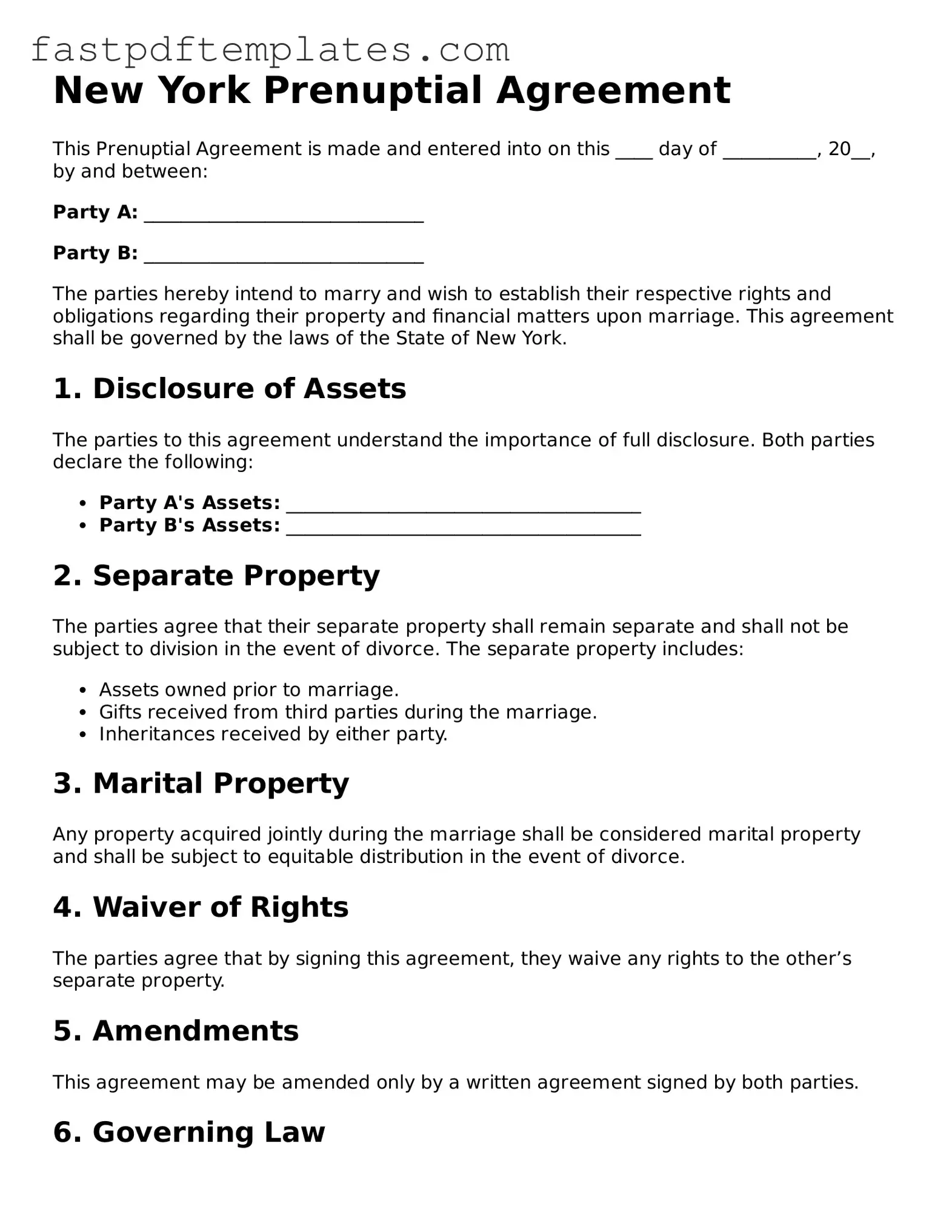New York Prenuptial Agreement
This Prenuptial Agreement is made and entered into on this ____ day of __________, 20__, by and between:
Party A: ______________________________
Party B: ______________________________
The parties hereby intend to marry and wish to establish their respective rights and obligations regarding their property and financial matters upon marriage. This agreement shall be governed by the laws of the State of New York.
1. Disclosure of Assets
The parties to this agreement understand the importance of full disclosure. Both parties declare the following:
- Party A's Assets: ______________________________________
- Party B's Assets: ______________________________________
2. Separate Property
The parties agree that their separate property shall remain separate and shall not be subject to division in the event of divorce. The separate property includes:
- Assets owned prior to marriage.
- Gifts received from third parties during the marriage.
- Inheritances received by either party.
3. Marital Property
Any property acquired jointly during the marriage shall be considered marital property and shall be subject to equitable distribution in the event of divorce.
4. Waiver of Rights
The parties agree that by signing this agreement, they waive any rights to the other’s separate property.
5. Amendments
This agreement may be amended only by a written agreement signed by both parties.
6. Governing Law
This agreement shall be construed and governed by the laws of the State of New York.
7. Signatures
By signing below, both parties acknowledge that they have read and understood this agreement and that they are entering into it voluntarily and with full knowledge of its terms.
Party A Signature: ______________________________ Date: ________________
Party B Signature: ______________________________ Date: ________________
8. Witnesses
This agreement requires two witnesses to validate the signatures of both parties.
Witness 1 Signature: ______________________________ Date: ________________
Witness 2 Signature: ______________________________ Date: ________________
